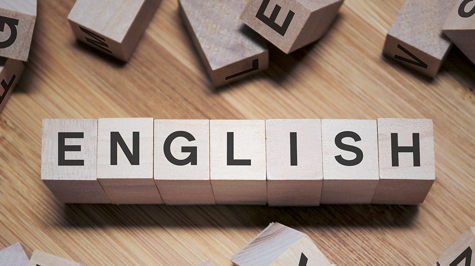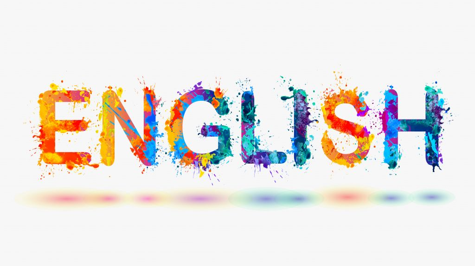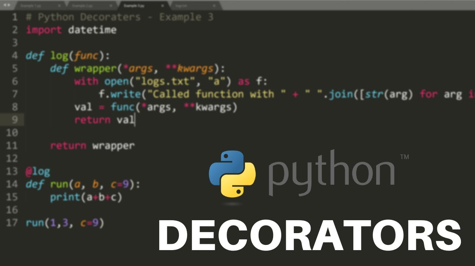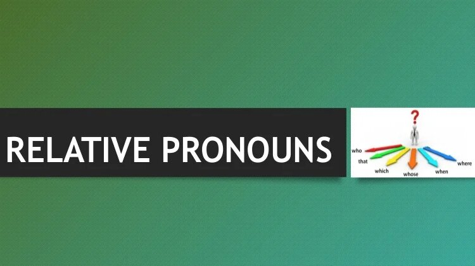English is a complex and versatile language, with a variety of tenses that can be used to express different aspects of time. If you're learning English, mastering the tenses is an essential step in achieving fluency and expressing yourself effectively in the language.
What Are Tenses in English?
Tenses in English refer to the form of a verb that is used to indicate the time of an action or event. There are three main tenses in English: past, present, and future. Within each of these tenses, there are several sub-tenses that can be used to further specify the time frame of the action or event.
Why Are Tenses Important in English?
Using the correct tense in English is important because it helps to clearly express the time frame of the action or event being described. This can make it easier for listeners or readers to understand the meaning of the sentence and can prevent misunderstandings. In addition, using tenses correctly can also help to make your writing or speech more sophisticated and professional.
Present Tense in English
The present tense in English is used to describe actions or events that are currently happening or are ongoing. There are several sub-tenses within the present tense, including the simple present, present continuous, present perfect, and present perfect continuous.
Simple Present Tense
The Simple Present tense is used to describe actions or states that are habitually or regularly occurring in the present. It is also used to describe general truths and facts.
The formula for constructing sentences in the Simple Present tense is:
Subject + Verb (base form) + Object
Examples:
- I play soccer every Saturday.
- She speaks French fluently.
- The sun rises in the east.
Note: The Simple Present tense can also be used in the third person singular (he, she, it) by adding an "-s" or "-es" to the base form of the verb. For example, "he plays soccer every Saturday."
Present Continuous Tense
The Present Continuous tense is used to describe actions or states that are happening at the present moment or are temporarily occurring. It is also used to talk about future plans and arrangements.
The formula for constructing sentences in the Present Continuous tense is:
Subject + To Be (am/is/are) + Verb (the present participle) + Object
Examples:
- I am reading a book right now.
- She is studying for her exams this week.
- They are building a new house on the outskirts of town.
Note: The Present Continuous tense is often used with time expressions like "right now", "at the moment", "today", etc. to indicate that the action is happening currently.
Present Perfect Tense
The Present Perfect tense is used to describe actions or states that started in the past and continue until the present, or that were completed at an unspecified time before the present. It emphasizes the connection between the past and the present and is used to talk about experiences or changes that have taken place over a period of time.
The formula for constructing sentences in the Present Perfect tense is:
Subject + Have/Has + Past Participle + Object
Examples:
- I have seen that movie three times.
- She has lived in New York for ten years.
- They have finished their project ahead of schedule.
Note: The Present Perfect tense is often used with time expressions like "yet", "already", "just", etc. to indicate the completion or status of the action.
Present Perfect Continuous Tense
The Present Perfect Continuous tense is used to describe an action that started in the past and continues until the present. It expresses the duration of an activity or state and emphasizes that it is still ongoing.
The formula for constructing sentences in the Present Perfect Continuous tense is:
Subject + Have/Has + Been + Verb (the present participle) + Object
Examples:
- I have been studying for this exam for three hours.
- She has been living in this city for five years.
- They have been working on the project since last week.
Note: The Present Perfect Continuous tense is often used with time expressions like "for" and "since" to indicate the duration of the action.
Past Tense in English
The past tense in English is used to describe actions or events that have already taken place. There are several sub-tenses within the past tense, including the simple past, past continuous, past perfect, and past perfect continuous.
Simple Past Tense
The Simple Past tense is used to describe actions or states that were completed at a specific time in the past. It expresses a past event as a finished or complete action.
The formula for constructing sentences in the Simple Past tense is:
Subject + Verb (past form) + Object
Examples:
- I saw a movie yesterday.
- She lived in Paris for two years.
- They finished their project on time.
Note: The Simple Past tense can be formed by adding "-ed" to regular verbs, or by using the second form of irregular verbs. For example, "play" becomes "played", and "eat" becomes "ate".
Past Continuous Tense
The Past Continuous tense is used to describe actions or states that were happening at a specific time in the past. It emphasizes the duration or progression of the action and is often used to describe the background of a past event.
The formula for constructing sentences in the Past Continuous tense is:
Subject + To Be (was/were) + Verb (the present participle) + Object
Examples:
- I was reading a book when she called me.
- She was studying for her exams all night.
- They were building a new house when the storm hit.
Note: The Past Continuous tense is often used with the Simple Past tense to describe two parallel actions happening at the same time in the past. For example, "I was reading a book while he was cooking dinner."
Past Perfect Tense
The Past Perfect tense is used to describe actions or states that were completed before a specific point in the past. It emphasizes the order of events in the past and is used to talk about events that occurred before another action or state in the past.
The formula for constructing sentences in the Past Perfect tense is:
Subject + Had + Past Participle + Object
Examples:
- I had seen that movie before I met her.
- She had lived in New York for five years before she moved to London.
- They had finished their project before the deadline.
Note: The Past Perfect tense is often used with time expressions like "before", "after", etc. to indicate the order of events in the past.
Past Perfect Continuous Tense
The Past Perfect Continuous tense is used to describe actions or states that started in the past and continued until a specific point in the past. It emphasizes the duration of an activity or state that occurred before another past event.
The formula for constructing sentences in the Past Perfect Continuous tense is:
Subject + Had + Been + Verb (the present participle) + Object
Examples:
- I had been reading a book for two hours when she called me.
- She had been studying for her exams for three days before the test.
- They had been building a new house for six months before the storm hit.
Note: The Past Perfect Continuous tense is often used with time expressions like "for" and "since" to indicate the duration of the action, and with other past tenses to indicate the order of events in the past.
Future Tense in English
The future tense in English is used to describe actions or events that will happen in the future. There are several sub-tenses within the future tense, including the simple future, future continuous, future perfect, and future perfect continuous.
Simple Future Tense
The Simple Future tense is used to describe actions or states that will occur in the future. It expresses a future event as a fact or prediction.
The formula for constructing sentences in the Simple Future tense is:
Subject + Will + Verb (base form) + Object
Examples:
- I will see a movie tomorrow.
- She will live in London for three years.
- They will finish their project on time.
Note: The Simple Future tense can also be formed using "shall" with the first person subject ("I" or "we"), although this usage is becoming less common in contemporary English. An alternative construction using "be going to" is also possible, which emphasizes intention or pre-planning: "I am going to see a movie tomorrow."
Future Continuous Tense
The Future Continuous tense is used to describe actions or states that will be happening at a specific time in the future. It emphasizes the duration or progression of the action in the future.
The formula for constructing sentences in the Future Continuous tense is:
Subject + Will + Be + Verb (the present participle) + Object
Examples:
- I will be reading a book at 9 PM tomorrow.
- She will be studying for her exams all day tomorrow.
- They will be building a new house next year.
Note: The Future Continuous tense is often used with time expressions like "at 9 PM tomorrow", "all day tomorrow", etc. to indicate the time when the action will occur in the future.
Future Perfect Tense
The Future Perfect tense is used to describe actions or states that will have been completed by a specific time in the future. It emphasizes the completion of an action or state at some point in the future and is often used to talk about events that will happen before another future event.
The formula for constructing sentences in the Future Perfect tense is:
Subject + Will + Have + Past Participle + Object
Examples:
- I will have seen that movie before I meet her.
- She will have lived in London for five years before she moves to New York.
- They will have finished their project before the deadline.
Note: The Future Perfect tense is often used with time expressions like "by the end of next week", "before the deadline", etc. to indicate when the action or state will be completed in the future.
Future Perfect Continuous Tense
The Future Perfect Continuous tense is used to describe actions or states that will have been ongoing or continuous until a specific time in the future. It emphasizes the duration of an activity or state that will occur in the future and end at some point.
The formula for constructing sentences in the Future Perfect Continuous tense is:
Subject + Will + Have + Been + Verb (the present participle) + Object
Examples:
- I will have been reading a book for two hours by the time she arrives.
- She will have been studying for her exams for three days before the test.
- They will have been building a new house for six months by next year.
Note: The Future Perfect Continuous tense is often used with time expressions like "for two hours", "for six months", etc. to indicate the duration of the action in the future, and with other future tenses to indicate the order of events in the future.
Tips for Using Tenses in English
- Practice, practice, practice. The more you use tenses in English, the more natural and fluent they will become.
- Pay attention to context. Consider the time frame of the action or event being described, and choose the appropriate tense accordingly.
- Be consistent. Within a sentence or paragraph, use the same tense for all verbs. This will help to avoid confusion and make your writing or speech clearer.
In conclusion, mastering tenses in English is a crucial step in achieving fluency in the language. By understanding the different tenses and their sub-tenses, and by practising their use in various contexts, you can become a confident and effective communicator in English.







